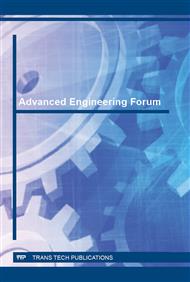p.19
p.23
p.29
p.36
p.46
p.59
p.67
p.76
p.86
Characterization of the Ultrafine and Nano Particle Emissions on Modified Indian Driving Cycle for Passenger Cars Operating on CNG Phase Wise Analysis
Abstract:
The ultrafine and nano particles compared to larger particles are gaining high importance because of their vulnerable effects to environment and human health causing respiratory problems, cardiovascular disease, and various types of cancers leading to premature death [1]. WHO report points out that approximately, two thirds of the global burden of disease due to urban outdoor air pollution is mostly from the developing countries in Asia (Cohen et al. 2004)[2]. By number, nearly all of the particles emitted by a diesel engine are nanoparticles which are also true for gasoline engines [3]. This is addressed by new UN Regulations by introducing the emission norms for diesel and GDI vehicles for particle number and PM2.5 as 6 x 10 11 and 4.5 mg/km respectively [4]. However, other S.I. engines like CNG, even though they look clean as there is no visible smoke but emitting large number of particles is necessary to investigate. This research paper focuses on characterization of ultrafine and nano particle emissions from CNG vehicle on Indian driving cycle and it covers experimental Investigation to identify the significance of different operating phases viz. idling, acceleration, deceleration and cruising for their contributions to particle number and size distribution pattern over urban as well as on extra urban part of the cycle. CNG passenger car shows large peak of PN emissions during cold starting phase at the beginning of the test cycle which is almost twice that of diesel vehicle. However, this concentration peak will decrease near to 25% on light operating loads during urban part of the cycle, but during acceleration and cruising operation on extra urban cycle under heavy load the PN emissions from CNG car are higher in magnitude. The particles emitted from CNG buses are too small to contribute to PM10 as they are of ultrafine and nano size range.
Info:
Periodical:
Pages:
86-96
Citation:
Online since:
October 2015
Authors:
Price:
Сopyright:
© 2016 Trans Tech Publications Ltd. All Rights Reserved
Share:
Citation:


